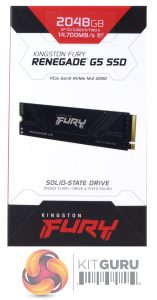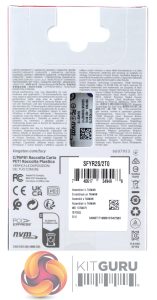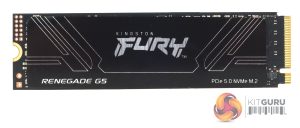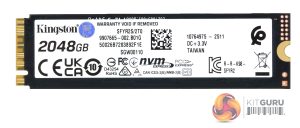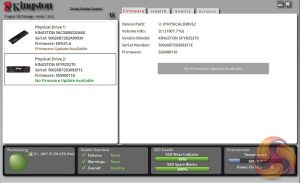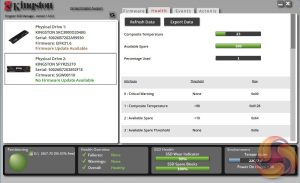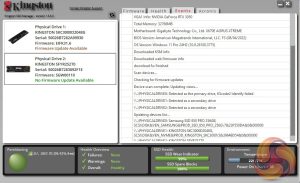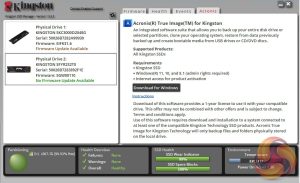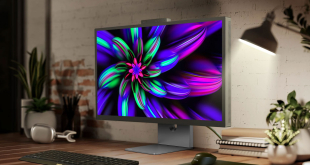The front of the box has a large, clear image of the drive on it. Above the image is a line of text displaying that the drive is a PCIe 5.0 NVMe M.2 design. At the top of the box is a label which shows the drive's capacity and its maximum sequential read speed.
On the back, there is a small window to show the drive in the box. The rest of the rear panel is covered in multilingual marketing notes.
Kingston Fury Renegade G5 is a single-sided design, so all components are on one side of the 12-layer PCB.
Along with the Silicon Motion SM2508 eight-channel controller, there are two Kingston-branded 1TB NAND packages. We couldn't decode the serial number, but searching around the web, it seems it could be re-branded 218-layer 3D TLC NAND. There is also a 2GB low-power DDR4 DRAM IC.
The 8-channel controller has been designed to offer both high performance and power efficiency. Using a 6nm process together with a proprietary built-in smart clock-gating mechanism, which intelligently and automatically powers down unused blocks, allows the SM2508 to be very efficient when it comes to power consumption (Silicon Motion claim 30% active power reduction over the previous generation IC). The SM2508 uses a quad-core ARM Cortex R8 CPU that supports four 32Gb/s PCIe lanes. The NAND channels have a bus rate of up to 3,600 MT/s each which provides up to 14.5 GB/s and 14 GB/s sequential (read and write, respectively) performance and up to 2.5M/2.5M IOPS random read/write performance.
Kingston’s SSD management utility is called SSD Manager (version v1.5.5.3 at the time of testing the drive). It automatically detects any firmware updates, displays drive status, temperatures and SMART information, as well as a link to download Acronis imaging/cloning software.
 KitGuru KitGuru.net – Tech News | Hardware News | Hardware Reviews | IOS | Mobile | Gaming | Graphics Cards
KitGuru KitGuru.net – Tech News | Hardware News | Hardware Reviews | IOS | Mobile | Gaming | Graphics Cards


